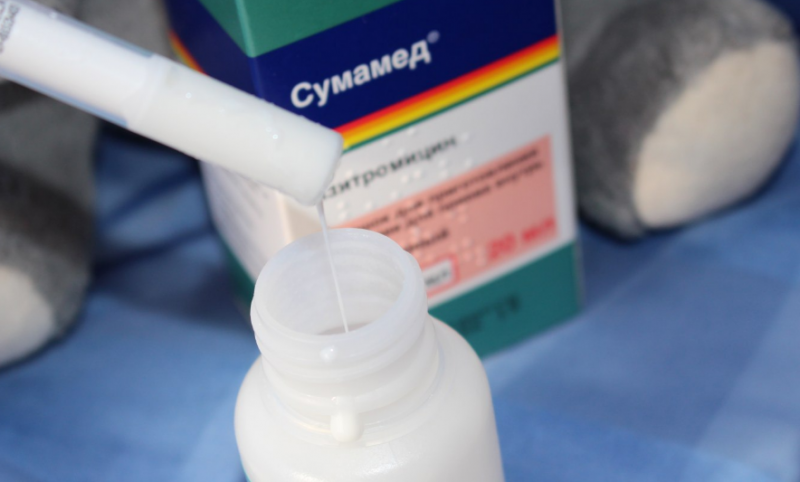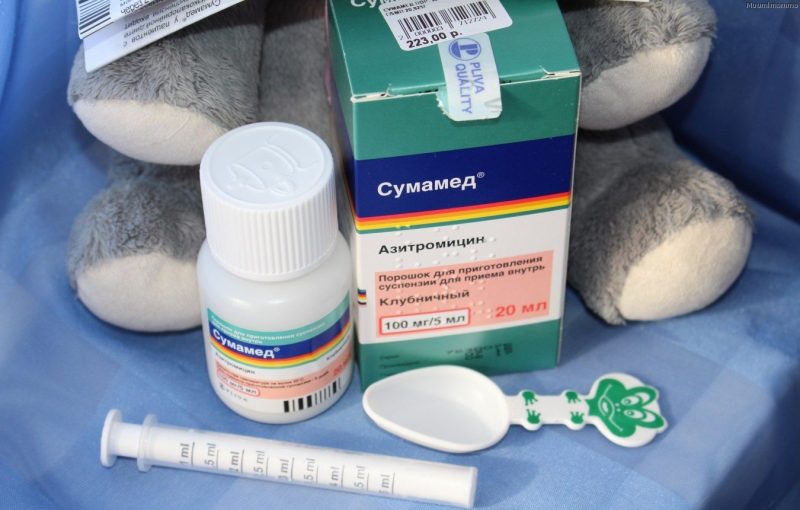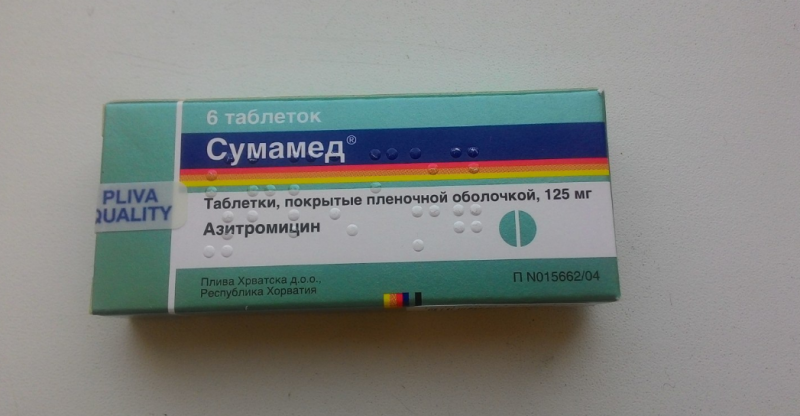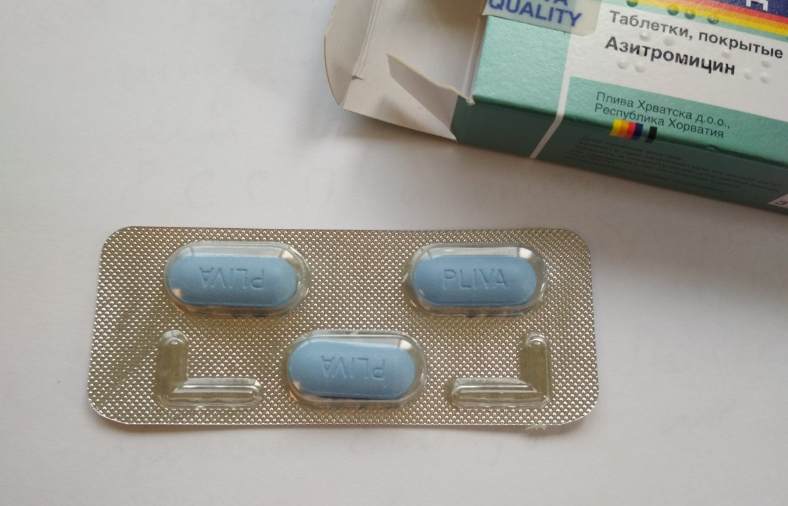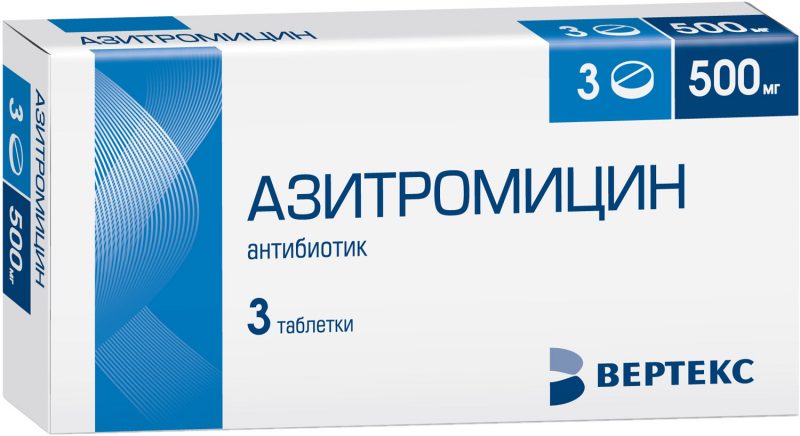Sumamed is an antimicrobial drug prescribed as part of the complex treatment of infectious diseases of bacterial etiology. This drug has the ability to inhibit the functionality of a wide range of bacteria that are sensitive to the active component. The antibiotic has a spectrum of contraindications and undesirable side reactions, which are important to consider when prescribing Sumamed for children. Description of the drug, dosage and features of use - further.
Material Content:
Composition and forms of antibiotic release
Sumamed is a synthetic pharmaceutical with a pronounced antibacterial effect. As part of the basic component, effective in killing bacteria, is azithromycin. Manufacturer - Pliva Hrvatska, a pharmaceutical company from Croatia. The antibiotic is available in various dosage forms and with varying dosages. Features of the composition in the forms of the drug proposed by the manufacturer are presented in the table below.
| Release form, name | Main component | Excipients |
|---|---|---|
| Sumamed tablets and capsules | Azithromycin: • 125 mg; • 250 mg; • 500 mg; • 1000 mg. | Calcium phosphate, talc, starch, cellulose, Mg stearate, polysorbate, titanium dioxide, Na lauryl sulfate. |
| Sumamed powder for suspensions 100 mg / 400 mg | Azithromycin (100 mg in 5 ml of the finished suspension) | Sucrose, Na phosphate, hydroxypropyl cellulose, silicon dioxide, gum, cherry, strawberry or banana flavor. |
| Sumamed Lyophilisate 500 mg No. 5 | Azithromycin 500 mg in 1 bottle | Citric acid, sodium hydroxide. |
Important! Dosage and release form are selected only on the basis of diagnostic results by a specialized specialist or pediatrician. The appointment takes into account age, diagnosis, weight, the presence of concomitant diseases and other factors.
Pharmacological action and pharmacokinetics
The antibiotic Sumamed is considered macrolide, it is included in the group of azalides. Penetrating into the human body, azithromycin molecules act directly on bacteria, inhibiting protein synthesis. The active substance has a bacteriostatic effect, but when the minimum concentration is exceeded by a factor of 6-8, a pronounced bactericidal effect is observed.
Azithromycin - the main active ingredient of the drug, acts on a number of gram-positive and gram-negative pathogenic microorganisms that provoke diseases.
The following types of bacteria are sensitive to antibiotics:
- staphylococcus;
- streptococcus;
- hemophilic bacillus;
- pneumophilic legionella;
- moraxella;
- pasteurella;
- chlamydia
- anaerobic bacteria;
- enterococci;
- mycoplasma.
The drug takes a bioavailable form at a temperature of 37 degrees. Immediately after penetration into the digestive tract, the active substances are distributed throughout tissues and biological fluids. Most of the active substances are found in tissues, part of azithromycin comes into contact with blood plasma proteins, after which the antibiotic produces a therapeutic effect. After this, azithromycin undergoes a metabolic process in the liver. The maximum concentration in the blood is detected after a two-hour interval from the moment of administration.
Excretion from the body:
- up to 12% azithromycin is excreted by the kidneys unchanged for 72 hours;
- the rest is excreted by the kidneys and with bile in the form of metabolites (decay products).
Decomposition products do not have antibacterial ability. Fully antibiotic is excreted from the body for 5 days.
From what age and for what purpose
Sumamed antibiotic is prescribed from a very young age - it is allowed for use by children from 1 month old, whose weight is from 5 kg and above.
Sumamed in various dosage forms is involved in the therapeutic chains of conservative treatment of the following diseases:
- respiratory diseases of bacterial etiology;
- skin infectious diseases;
- bacterial infections of the pelvic organs;
- violations of a bacterial nature with foci of localization in the soft tissues and musculoskeletal system.
In the postoperative period and in severe cases of viral diseases, Sumamed antibiotic is prescribed in a prophylactic dosage to prevent the attachment of secondary bacterial infections.
Instructions for use Sumamed for children
In packaging with an antibiotic, complete instructions for use are always attached. Before use, it is important to study it. For each dosage form has its own characteristics of use.
125 mg tablets
Sumamed tablets 125 mg - a dosage form used in pediatric practice as a component of complex pharmacotherapy for children from three years of age, having reached a weight of 10 kg and above.
Admission Rules:
- the tablet must be swallowed;
- drink the drug separately from meals with an interval of 1 hour;
- drink plenty of water or other liquid.
125 mg tablets are taken at intervals of 24 hours. In cases where the regime is impaired, you should take the pill as soon as possible, and carry out the next dose after a day.
Important! The duration of the course is determined individually and ranges from 3 to 6 days in the uncomplicated course of the disease. An increase in the dose or duration of the course is performed only by a specialist who observes the child during treatment.
Capsules Sumamed
The dosage of Sumamed capsules for children is 250 mg. This dosage form is used in the treatment of patients aged 12 years and over with a body weight of more than 45 kg.
Admission Rules:
- swallow without biting;
- drink plenty of water;
- take 1-2 hours before or after a meal;
- observe the interval (reception no more than 1 time per day or according to an individual schedule).
The dosage and duration of treatment is determined by the doctor. In uncomplicated infections of the respiratory tract, urinary system and skin, 500 mg per day is prescribed. In severe diseases caused by pathogenic microflora, this dose can be increased by 2-3 times.
Suspension
Susamed suspension is used for penetration into the cells of pathogenic organisms in infants with a body weight of 5 kg to 15 kg. If a child is older than 3 years old with a body weight of 15 kg or more, then Sumamed forte suspension is used, where a single dose of azithromycin is 200 mg.
Breeding Rules:
- Sumamed 100 mg - 12 ml of water in 1 bottle;
- Sumamed forte 200 mg - 9.5, 16 or 20 ml of water (depending on volume).
The suspension is dosed with a special syringe, which is supplied. Reception is carried out 1 time per day in a dosage of 5 ml. The dose may be increased by the doctor if necessary.
Drug interaction
Sumamed is compatible with almost all medicines, but there are limitations and special recommendations.
The following are the features of combining antibiotic in complex pharmacotherapy:
- Sumamed and other azithromycin-based antibiotics cannot be combined with drugs that can extend the QT interval.
- It is dangerous to combine Sumamed with cephalosporin antibiotics.
- Used with caution in combination with antiarrhythmic drugs.
- With simultaneous use with antacids (anti-heartburn drugs), the effectiveness of antibiotic absorption may be slightly reduced.
Regarding compatibility with other drugs, there are currently not enough clinical studies. Therefore, it is important to discuss combinations with your doctor. If necessary, the therapeutic course will be subject to correction.
Contraindications, side effects and overdose
The antibiotic Sumamed is an exclusively prescription drug. Its use in therapy is allowed only as directed by a doctor. The specialist will take into account the presence of all contraindications and select the most favorable and safe version of the drug.
The use of any of the dosage forms of Sumamed is strictly contraindicated if the following diseases and conditions are found:
- hypersensitivity to macrolide antibiotics;
- impaired liver function;
- fructose intolerance (if a suspension is prescribed, it is replaced by the equivalent in tablets).
In the presence of a congenital or secondary prolongation of the QT interval with heart failure and heart defects, the drug can be prescribed, but therapy is carried out strictly in a hospital, where there is the possibility of constant monitoring by a specialist.
Even intended use does not guarantee the absence of side effects. A child's body can respond to antibiotic intake in different ways, depending on individual characteristics.
Common adverse reactions are described below:
- Rash, itching, dermatitis.
- Angioedema and other types of allergic reactions from the respiratory system.
- Candidiasis.
- The development of superinfection.
- Dysbacteriosis, diarrhea, flatulence membranous colitis.
- Headache, drowsiness, irritability.
- Impaired liver function, jaundice.
- Clotting disorder, leukocytopenia.
- Dysuria, jade.
The side effects described above occur with an overdose in a more pronounced form. These reactions are joined by a deterioration in well-being, vomiting, the classic clinical picture of drug intoxication.If symptoms of an overdose are found, it is necessary to rinse the stomach, seek help from a medical institution.
Antibiotic Analogs
There are drugs with a similar composition or similar mechanism of action.
Sumamed analogues are used in the following cases:
- allergy to the main or auxiliary components of the drug;
- in order to save (selection of cheaper drugs);
- antibiotic is not available in pharmacies.
Sumamed has several analogues with the same composition produced by other pharmaceutical companies. In addition to them, there are several dozen drugs that differ in composition, but have the same pharmacological properties and mechanism of action. The most popular analogues of the drug are presented in the table.
| Title | Estimated Cost Difference | Active substance |
|---|---|---|
| Azithromycin | 50-60% cheaper | Azithromycin |
| Azitro Sandoz | 20% more expensive | |
| Azitrox | 30% cheaper | |
| Azivok | 60% cheaper | |
| Azitral | 10% cheaper | |
| Azit | 20% cheaper |
Analogs are selected individually. There are many drugs based on azithromycin, but not all of them are used in pediatric practice to treat children. Consultation required.
In cases of detection of a pathological hypersensitivity reaction to azithromycin in a child, it is advisable to raise the question of the selection of drugs with a similar effect, but based on other active substances.
Sumamed for children, as prescribed by a pediatrician or a specialized specialist, is replaced with the following drugs:
- Clarithromycin;
- Josamycin;
- Midecamycin.
The described antibiotics are similar in mechanism of action and are allowed in pediatric practice with the condition of selection of a dosage appropriate for age and weight.
Antibiotic Sumamed is an effective antibacterial agent for the treatment of bacterial infections. Following the recommendations of the doctor and the basic rules of the instructions, you can get the maximum benefit from the drug and avoid negative consequences.


